Ishtar: Gardens of Babylon — Sowing seeds and planting trees
IELLO are known for their beautifully crafted, straightforward games, often focussing on lighter mechanics and gameplay with a family-friendly feel. Whilst Ishtar: Gardens of Babylon shares IELLO’s usual exceptional production qualities and is simple to pick up and play, it is one of the publishers more strategic titles. The last IELLO game I played was Kanagawa, which was an understated beauty with a lot of depth; will Ishtar live up to the same standard?
Ishtar plays with up to four players, and comes with a modular board which can be randomised in more or less any way you can imagine. The board will always consist of two more board tiles than there are players, and either side of each board piece can be used in any orientation. In addition, a face up “Tree Market” of five cards will be laid out, and the players will take a board each that shows a range of single use special abilities.
The other central feature of Ishtar’s setup is a carpet board, which will have six tiles placed onto it at random, each of which will show a different pattern. The players then place a stack of tiles that match the pattern shown, face down onto each space. A final face up tile showing the starting tile symbol will then be added to each one — these stacks are adjusted in size based on player count.
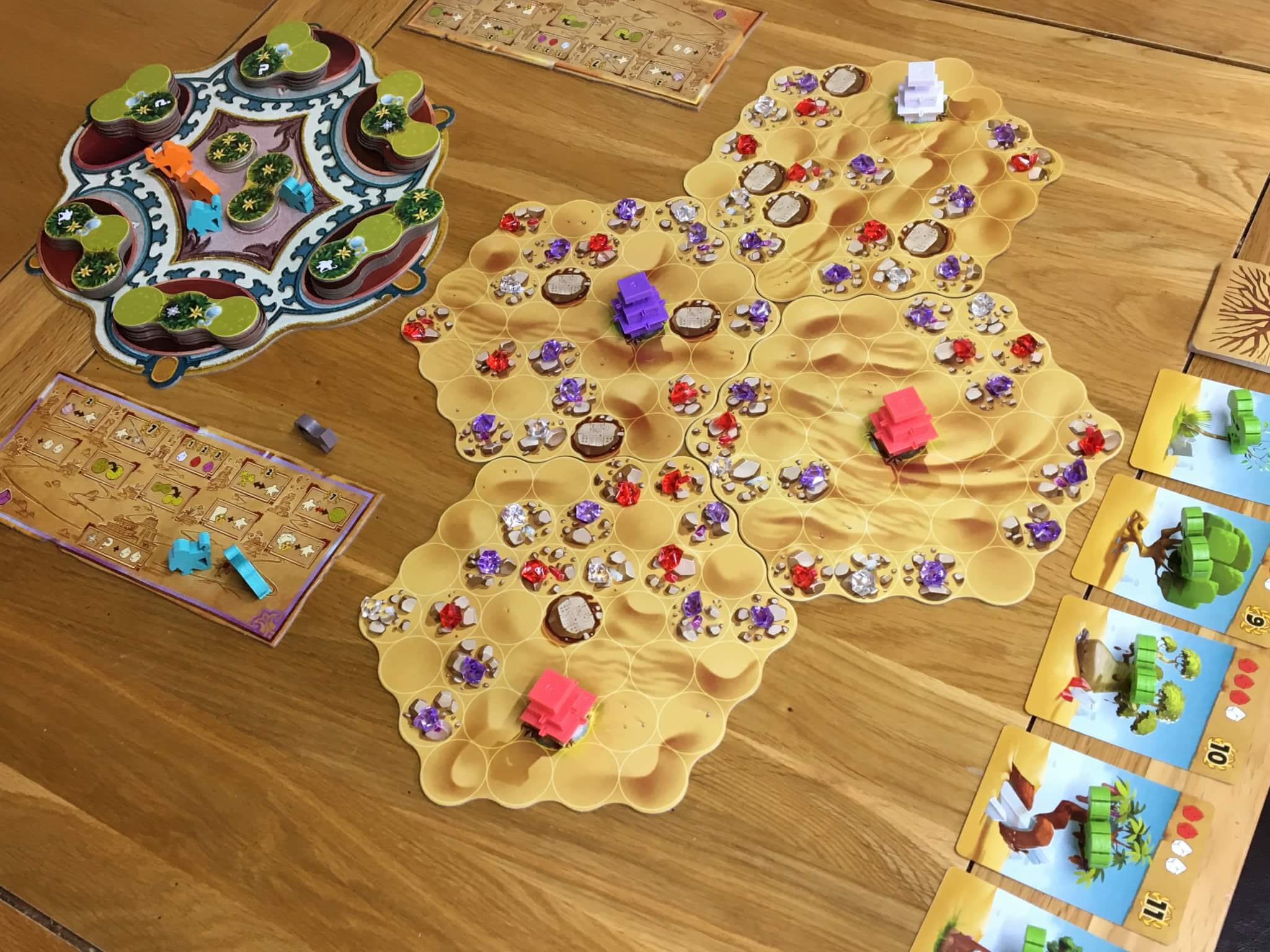
A few other elements finish off the setup, with attractive plastic jewels in three colours being placed onto matching board spaces, then a collection of trees, remaining jewels and other paraphernalia will be added to the side. Each player takes one purple jewel and two assistants in their colour and places them in their personal supply, with their other two assists placed somewhere on the carpet board for later use.
The objective of Ishtar is to score the most points by building gardens outwards from central fountains, of which there will be one for every board tile. To have control of a garden (and therefore to score it) a player must have an assistant on it, and it’s also important to understand that only connected flowerbed spaces will score. This is hard to explain, but if you look at the pictures, you’ll see that some of the garden tiles are plain green, whilst others have foliage on them — only the foliage tiles count as flower bed.
Each fountain can support multiple gardens, but each garden can only have one assistant on it. All gardens connected to a fountain add towards control of it, so if, for example, three gardens grow around a single fountain and each one is controlled by assistants from separate players, then only the player who has the most connected flowerbed (foliage) spaces will have control, subsequently allowing them to score that fountain.
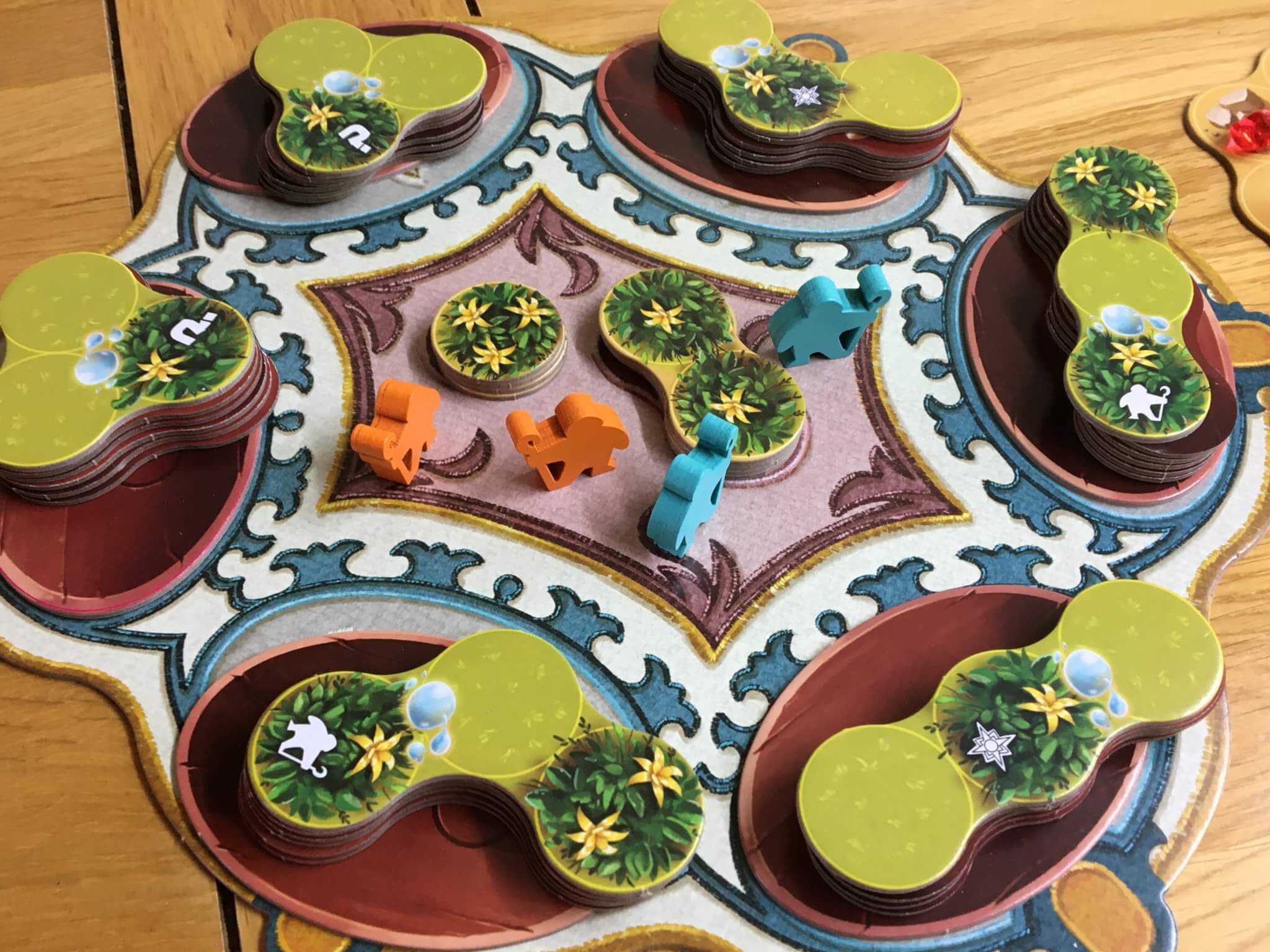
The way in which these gardens are expanded is perhaps the most interesting element in Ishtar, and it all revolves around the carpet board. Beginning with the first player (who can choose any stack) the players will move a watering can clockwise around the stacks on the carpet board. On any turn after the first, the player whose turn it is will need to decide between using the tile under the watering can, or paying a gem for every stack they want to skip over in a clockwise direction. For example, if they wanted to skip forward two stacks, then they would pay two gems.
With their chosen tile in hand, the player will then take that tile and place it somewhere on the board – either adjacent to a fountain, or another garden tile that is already connected to a fountain. Ideally, the player will want to extend a garden that they already control in most cases, but there are a few other considerations.
Each tile placed over the top of one or more gems will mean that the player takes those gems — which can often be one or two. Some garden tiles also include special icons that allow the player to place an assistant, perform a special action or choose from either option. Placing assistants is powerful as long as you have one, whilst taking a special action is always good as long as you have two gems to pay for it (which you almost always will have during the midgame).
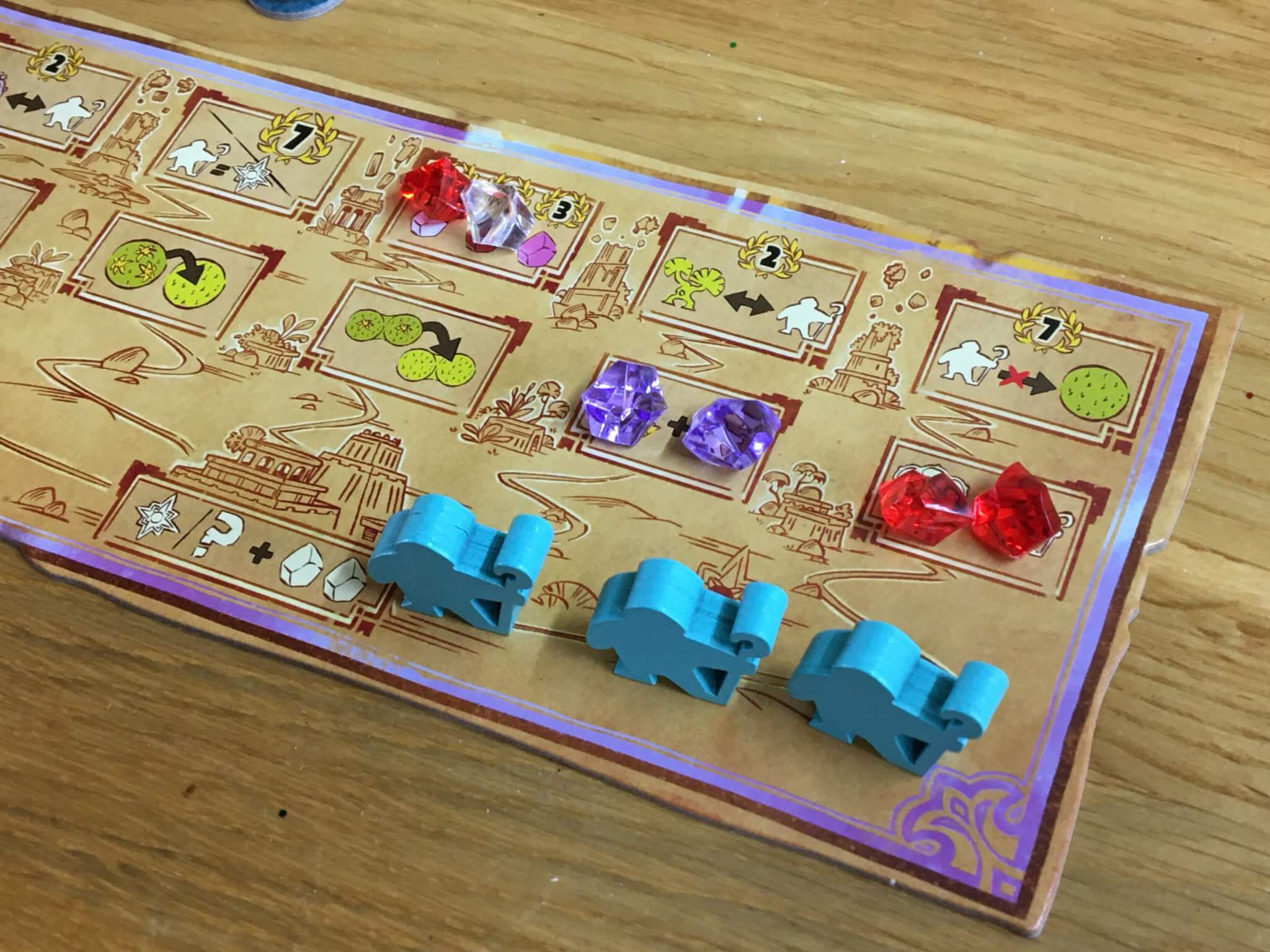
There are many special abilities ranging from access to your remaining two assistants, to methods of scoring additional points during the end game. Essentially, the choices are split more or less between a powerful bonus during gameplay, or an end game or points bonus that might not benefit you immediately. In most games, you’ll need to make good use of both kinds of bonus in order to maximise your chances of winning.
Trees allow further opportunities for scoring and can also cover the empty grass spaces. Completing a tree is simple — all you need to do is pay gems equal to the value shown on the card, thus claiming it, and then place a tree token onto the board. The claimed card will then count towards your final score, and points values range from just a few to more than ten, which makes planting trees a powerful strategy that can’t be ignored.
Ishtar is one of those “extremely generous” games that gives players several ways to score points and is balanced in such a way that there is rarely a move that feels bad, even if it is not the optimum choice. For example, you will only ever gain three gems if boards have been laid out in very particular ways, and to do so, you’ll be a long way from a fountain – so perhaps taking two gems and being closer is a fine move on balance.
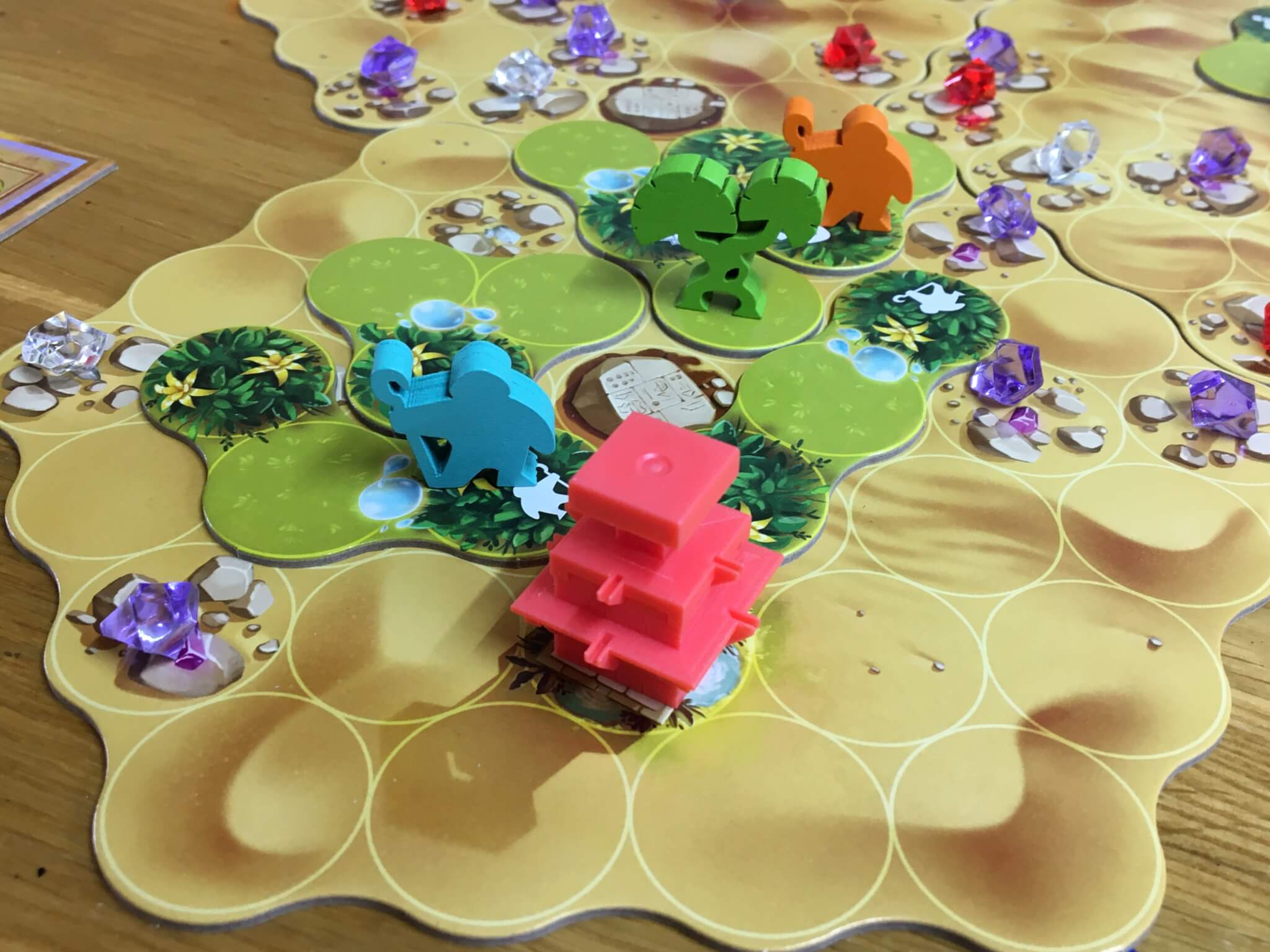
Similarly, scoring tree tiles is definitely rewarding, but so is investing your gems into special abilities that can either provide similar direct opportunities for scoring, or indirect benefits like additional assistants and so on. There’s no engine building or any of the heavier eurogame style mechanics that might allow players to create “broken” systems, and as a result Ishtar is really an efficiency puzzle where player interaction plays a decent role, since “spoiling” your opponents gardens with poor pieces is a valid strategy.
As always, IELLO has delivered a knockout combination of superb artwork, excellent build quality and really nice, tactile components, as well as an excellent game. Ishtar is a simple design that takes light aspects of area majority, set collection and the use of special abilities to give players a lot of freedom, whilst also keeping games very nicely balanced.
Ishtar is an attractive game for younger players, but I’d suggest that only the most talented player under about twelve years of age would be able to compete against experienced adults, such is the need to think about the efficiency of each turn, and the tight margin between a “fine” turn and an “exceptional” one. Overall, Ishtar is a game that I will enjoy many more times before it begins to wear out its welcome, and therefore it comes well recommended.
You can purchase Ishtar: Gardens of Babylon on Amazon.
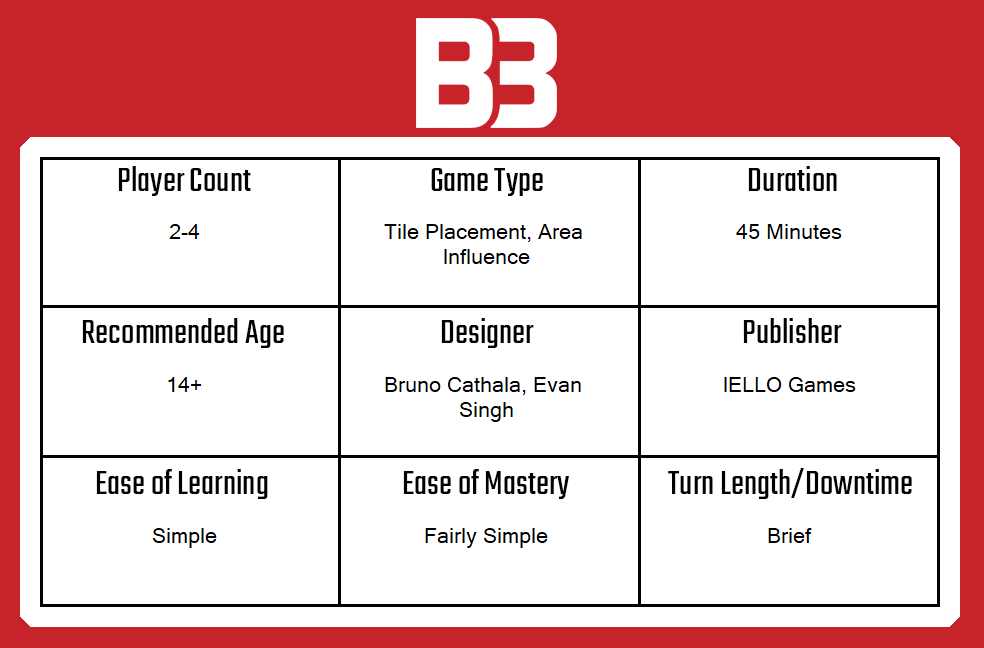
Comments are closed.